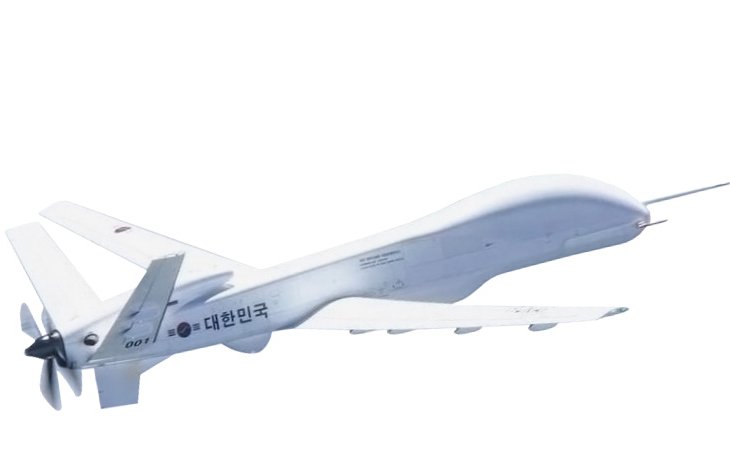According to information published by the South Korean MoD on January 29, 2024, the Defense Acquisition Program Administration (DAPA) of South Korea has announced the commencement of an ambitious project to develop unmanned aerial vehicles (UAVs) for shipboard and northwestern island reconnaissance.
Follow Navy Recognition on Google News at this link
 Artist rendering of Medium Altitude Unmanned Aerial Vehicle. (Picture source: Hanwha Systems)
Artist rendering of Medium Altitude Unmanned Aerial Vehicle. (Picture source: Hanwha Systems)
The project, overseen by Hanwha Systems, is set to run from December 2023 to December 2028, with an investment of approximately 143.3 billion won. These advanced UAVs, characterized by their rotary-wing design, are South Korea's first development in this category.
They are uniquely capable of operating from terrain without runways, including land and naval vessels. The UAVs will be equipped with high-performance electro-optical/infrared (EO/IR) cameras and multifunctional radars, enabling effective surveillance and reconnaissance across varying environments and targets.
The deployment plan for these UAVs includes stationing them on naval ships and Marine Corps units in the northwestern islands. This region, particularly sensitive due to continuous provocations from North Korea, necessitates enhanced and meticulous surveillance.
The new UAVs, utilizing EO/IR cameras and radars, will expand the reconnaissance scope in the northwestern islands, providing 24-hour monitoring to early detect and actively respond to provocations from adversaries or neighboring countries.
Director-General of DAPA's Advanced Technology Business Division emphasized the project's challenges, particularly in the technology for UAV takeoff and landing on ships.
Despite these challenges, DAPA, in collaboration with the military and development companies, is committed to timely equipping the UAVs for operational deployment. These UAVs are expected to play a significant role in preemptively detecting threats and responding to North Korean provocations. Director-General also anticipates that this project's success will contribute to the export potential of South Korean defense companies in the UAV sector.



